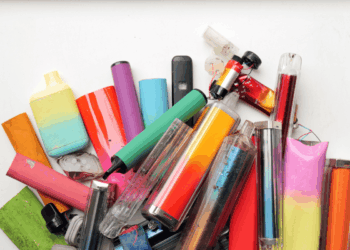Michigan lawmakers have introduced an extended producer responsibility bill for packaging, following the successful passage of a packaging EPR bill in Minnesota.
HB 5902, which was introduced by two Democrats on July 31, excludes beverage containers, as Michigan already has a deposit return system. It sets recycling and material reduction targets and directs producers to pay for the development of packaging reduction programs and reimbursements to local governments to cover the full cost of recycling packaging.
Under the draft bill, chemical recycling is not considered recycling. Producers are exempt if they used less than 1 ton of packaging material during the prior year or if they make less than $1 million in total gross revenue.
The bill calls for the state Department of Environment, Great Lakes and Energy to select a packaging reduction organization using a competitive bidding process that will serve for 10 years.
The packaging reduction organization is responsible for collecting fees and dues and refunding governments and the state when necessary, investing in packaging reduction, reuse and recycling, conducting an annual review to determine which products and packaging materials are recyclable, and carrying out a needs assessment every five years.
Under the draft bill, fees are set based on the total amount, by weight, of each type of packaging material used by the producer. The fees must cover the total cost of collection, transportation and management of each type of packaging material, administrative costs and the needs assessment. The fees are also meant to incentivize reductions in litter, toxic substances and total packaging distributed by producers in the state, and increases in reuse and refill and the proportion of a producer’s packaging that is recyclable and is ultimately recycled.
The department would be directed to update fees every three years.
It’s not yet clear whether the bill will move forward. In Michigan, Democrats control both chambers of the legislature as well as the office of governor, held by Gretchen Whitmer.
Targets
HB 5902 would set several recycling and reduction targets. Beginning two years after the producer first registers with the packaging reduction organization, it would need to reduce the weight of packaging by 10%. Every two years following, the target would increase by 10% until it topped out at 50%. The baseline weight is the weight reported the first year the producer registers.
“If, when a producer enters the market, 50% or more by weight of its packaging is reusable and contained within a reuse and refill system, upon application from the producer, the department shall waive the packaging reduction requirements,” the bill states.
As for recycling rates, the target would be at least 30% within five years of the effective date of the bill, at least 50% after eight years and at least 70% after 12 years. The effective date of the bill, if passed, would be Jan. 1, 2025. Michigan’s legislative session ends Dec. 31.
The draft legislation would also ban nearly 20 toxic substances from being included in packaging, including PFAS, halogenated flame retardants, formaldehyde, polyvinyl chloride, toluene and polystyrene.
Speaking on previous bills with similar toxic materials list, Betsy Bowers, executive director of the EPS Industry Alliance, has noted that these lists sometimes mix polymers with chemicals. For example, toluene is a chemical used to make polystyrene, and polystyrene is also on the list.
Every three years, the department would be directed to add at least 10 more substances to that list, the bill noted.
“If the department determines there are not at least 10 such toxic substances remaining to be designated, it shall publish a detailed statement of its findings supporting the determination and designate those toxic substances that do remain,” the bill states.
If the bill ends up passing, it would be the sixth such law in the United States. Minnesota is the most recent state to enact EPR for packaging. It followed California, Colorado, Maine and Oregon, which passed EPR over the past several years.
A version of this story appeared in Resource Recycling on Aug. 27.
























